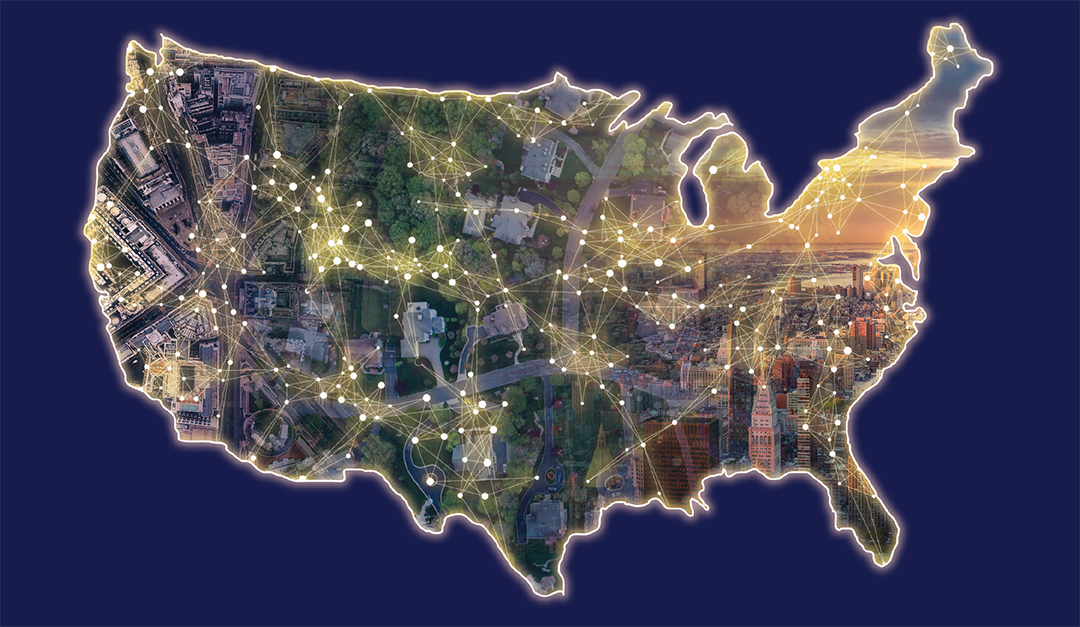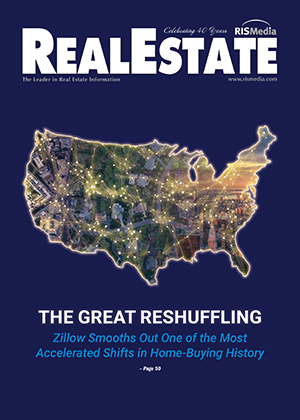 Zillow Smooths Out One of the Most Accelerated Shifts in Home-Buying History
Zillow Smooths Out One of the Most Accelerated Shifts in Home-Buying History
The market seems to be at an inflection point, but with elections and pandemics driving market sentiment, it’s hard to know which way is up. “Should I buy, sell, rent, remodel or sit tight?” With Zillow, the universal answer may very well be “yes.”
With a plethora of real estate brands under its umbrella, the Zillow Group essentially reflects the entire market, serving buyers, sellers and everyone in between for the full lifecycle of homeownership. Zillow’s marketplace empowers consumers at all stages of the real estate journey, providing data, inspiration and knowledge—and connecting them with local real estate professionals who can close the deal and bring their dreams over the finish line.
The information compiled in Zillow’s easily accessible databases gives real-time insight into the latest market activity, including Zestimates for home values—Zillow’s home valuation model estimate of a home’s market value—not to mention some of the most comprehensive reports to crack any trend playing out across the nation. For many, Zillow is the brand to turn to during uncertain times like these as the company has necessitated year’s worth of new technology adoption into months.
‘The Great Reshuffling’
While quarantining during the pandemic has kept us from our friends and loved ones, no one can deny that it has brought us closer to our homes. For millions of Americans working from home and millions more unemployed while people keep their distance, the concept of “home” has taken on a new meaning. It’s no longer the place where a family simply rests between shifts or after a weekend trip. Home is now the exclusive place for day-to-day, hour-to-hour operations.
Zillow’s Chief Industry Development Officer, Errol Samuelson, says this renewed intimacy that people have with their homes has led to a lot of realizations by homeowners that their sanctuaries are not as comfortable as they could be. Living and working are two very different roles for most people, and Samuelson notes that people are buying new properties that can serve both of those functions.
 “Housing is a fundamental human need,” Samuelson says. “All of us have been locked in our homes for months on end. People are realizing that they want more outdoor space or maybe they need a dedicated office for remote working. We at Zillow call this tectonic shift in real estate—where people are re-examining where they want to be and what ‘home’ means to them—the ‘Great Reshuffling.'”
“Housing is a fundamental human need,” Samuelson says. “All of us have been locked in our homes for months on end. People are realizing that they want more outdoor space or maybe they need a dedicated office for remote working. We at Zillow call this tectonic shift in real estate—where people are re-examining where they want to be and what ‘home’ means to them—the ‘Great Reshuffling.'”
This is a major trend that has homebuyers actively looking for new amenities that are conducive to the COVID-19 era—homes with a private, modern office space and less emphasis on open floor plans.
Zillow has studied this from every angle, looking at the latest transactions, home-browsing behaviors on its website and comprehensive lifestyle surveys. For instance, in the early days of quarantine, Zillow found that nearly a third of people who were working from home were doing it from their living room, and another third were working from their bedroom.
“There was even a small percentage of folks who were working from their attic,” Samuelson says. “It’s no wonder why, when we asked them if they’d move, 31 percent said they would, and they would move just for the purpose of getting a home office. That focus on basic needs is driving agitation to move or get a second place.”
Zillow’s traffic data backs up these findings with a 50 percent surge in property searches that are sorted by desired features, not location preferences. Samuelson says this is indicative of people’s interest to upgrade within their home city or region. A move to the suburbs, or even just another part of the same town, is easier for a family to digest than moving everyone to a new location. However, he adds, a major move like that could be in the cards longer term depending on employment, health and public safety trends.
“We expect some urban to suburban migration, but we are also seeing a strong interest in the conveniences that come with being more urban,” Samuelson says. “This concept of a Great Reshuffling might be across various geographies and within a zip code or school district to a different house.”
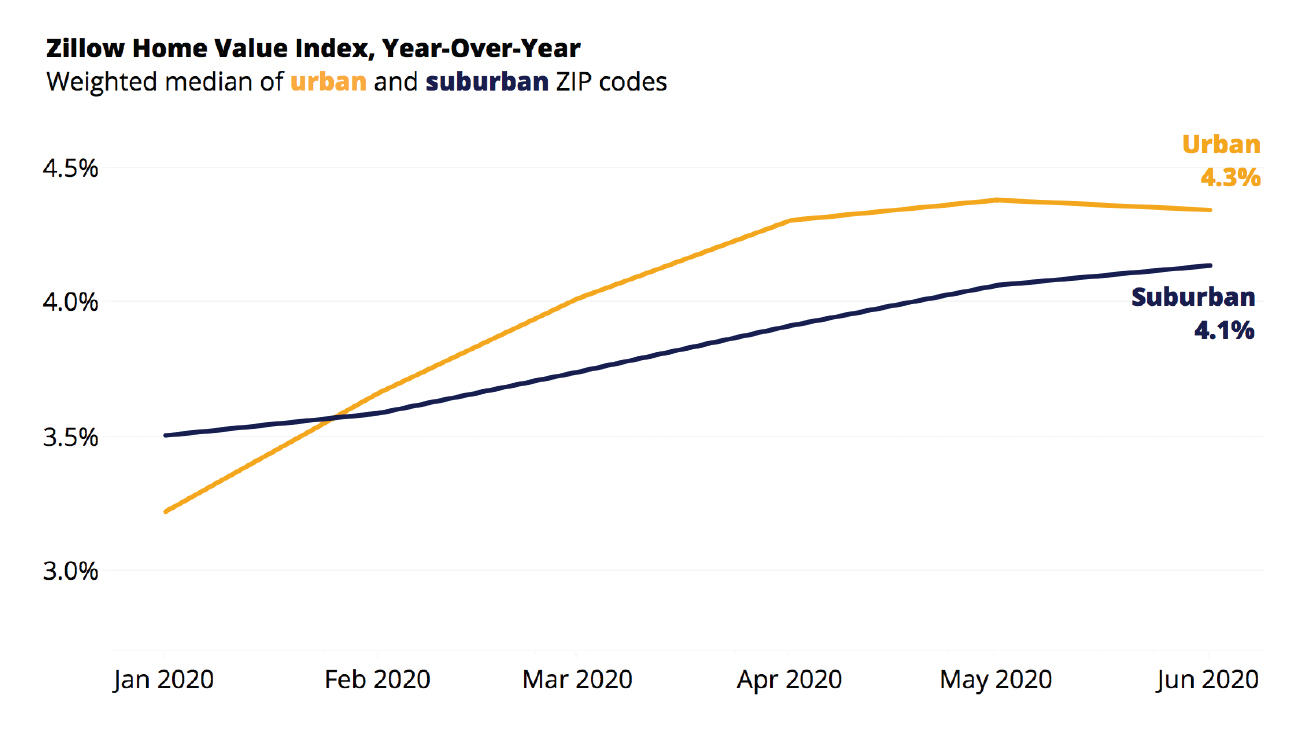
Samuelson notes that now that they’ve gotten a taste for it, 75 percent of those surveyed said that they would want to work from home full-time if given the option. For now, though, all of this close-by moving is more of a reshuffling than a mass migration.
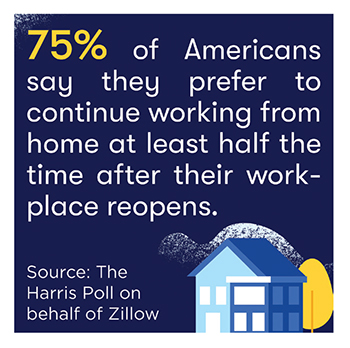 “We believe that we’re in the midst of significant psychological and behavioral shifts that will permanently impact home shopping and moving,” he explains.
“We believe that we’re in the midst of significant psychological and behavioral shifts that will permanently impact home shopping and moving,” he explains.
The Looming Building Boom
All of this reshuffling has put enormous stress on the residential real estate industry, which, in some areas, is taking investments that would otherwise go toward commercial real estate. Zillow has led in terms of committing to let employees work from home for the long-term, with tech giants Google and Facebook also following suit, and financial titans are getting on the work-from-home train as well. Nationwide Insurance has gone toward remote working and Morgan Stanley has called for “less real estate” in its future.
As the big employers spend less on office leases, Zillow could be perfectly positioned for a shift in capital allocation toward residential real estate. Companies have already begun funding workers’ home-office expenses for things like WiFi, computers and printers. One could see a scenario where residential reshuffling, including a percentage of home-buying and/or moving, are standard benefits in the at-home economy.
Between the motivations to move and the low interest rates, Samuelson sees additional commercial investments into residential real estate as an accelerant to an already-hot reshuffling trend. He notes that housing supply is down 26 percent nationwide from last year, and as the economy recovers, the demand can only get greater.
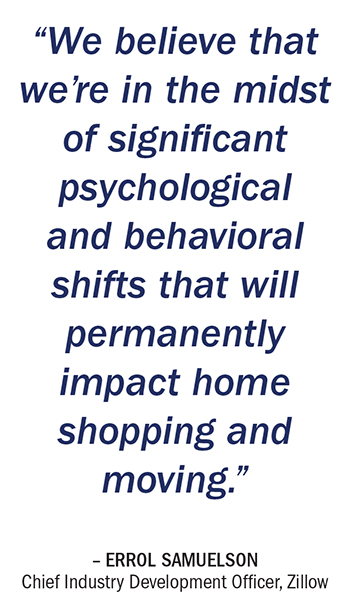 “Builders are trying to catch up,” Samuelson says. “When they do, we’ll see a lot of quality inventory with home offices and other post-pandemic amenities. The suburbs could flourish, and if allowed to adopt totally remote careers, buyers could flock toward the more popular destinations based on weather or lifestyle factors. Either way, Zillow will be there to help with our diverse suite of real estate technology products.”
“Builders are trying to catch up,” Samuelson says. “When they do, we’ll see a lot of quality inventory with home offices and other post-pandemic amenities. The suburbs could flourish, and if allowed to adopt totally remote careers, buyers could flock toward the more popular destinations based on weather or lifestyle factors. Either way, Zillow will be there to help with our diverse suite of real estate technology products.”
Zillow, the top residential real estate website in the U.S., is building an on-demand real estate experience. Whether selling, buying, renting or financing, customers can turn to Zillow’s businesses to find and get into their next home with speed, certainty and ease. In addition to for-sale and rental listings, Zillow Offers buys and sells homes directly in dozens of markets across the country, allowing sellers control over their timeline. Zillow Home Loans, its affiliate lender, provides customers with an easy option to get pre-approved and secure financing for their next home purchase. And Zillow Closing Services, the affiliate title and escrow services company of Zillow, has a new digital experience that allows customers selling their home through Zillow Offers to track their closing process online from open of escrow to transaction closing.
Can the Genie Fit Back Into the Bottle?
One result of the quarantine is the massive proliferation and acceptance of technology in real estate. From online open houses to virtual home inspections, consumers and industry pros have taken to these no-contact approaches in the name of safety. Zillow has been on the forefront of the cleanliness and safety movements, naming former U.S. Surgeon General Dr. Regina Benjamin as the company’s health advisor and implementing the CDC’s “clean, protect, distance” protocol.
“Safety considerations are no longer optional—they are paramount to the consumer real estate experience,” Samuelson says, adding that many also have come to appreciate the convenience and efficiency of doing certain things electronically.
“We’ve seen massive adoption of virtual tours—3D tours have spiked 500 percent in the beginning of the pandemic with home views increasing 60 percent and listing saves increasing 40 percent. Does the genie go back into the bottle?” Samuelson asks. “This moment has laid bare how antiquated processes like in-person appraisals, filings and closings cause unnecessary friction. The virtual tools home shoppers need for safety today will become their expectations for convenience tomorrow.”
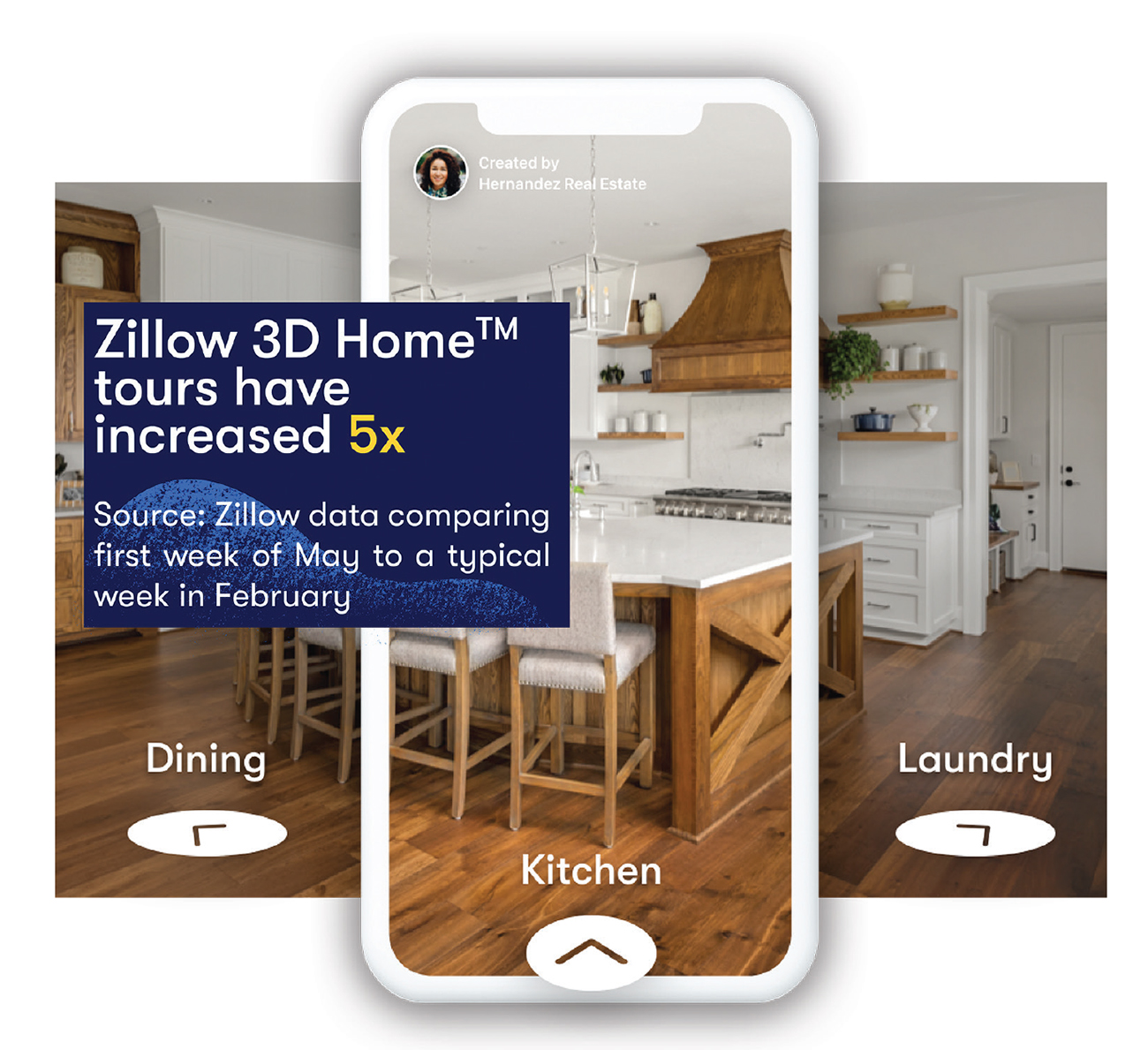
From a technology adoption standpoint, Samuelson estimates that the real estate industry has evolved five years in the past five months. The trend has also taken over the rental market as Zillow automates the tenant-screening process for its clients and manages lease documents digitally and securely through its proprietary end-to-end platform. To keep real estate moving forward safely, Zillow’s new end-to-end rentals platform allows renters to find, tour, apply for and lease a home entirely digitally. Landlords simply upload their leases, and online signing tools take it from there. Even security deposits, rent and utilities payments can be collected digitally by landlords and property managers through Zillow Rental Manager.
“We’re focused on creating products that power a digital experience and enable our partners to provide always-on, exceptional and empowering service to our shared customers, including one-stop solutions for tenants and landlords, virtual discovery of new-build homes, agent/buyer connections, collaboration and transaction management tools, and connective tech integrating our insights into multi-family partner systems to provide intelligent, efficient service,” Samuelson says.
Fair and Equal
As leaders at reimagining real estate, Zillow has taken the initiative to proactively seek more housing options for everyone, despite their race, gender, religion, age or sexual orientation. This sense of fairness, unfortunately, has been lacking among many American institutions, and the real estate industry has been one of them.
“The real estate status quo has a lot of systemic problems, and we need to address them as partners to drive widespread, lasting change for our shared customers,” Samuelson says. “At Zillow, we feel it’s our responsibility to start and fuel the important conversations that drive critical reform, not just in technology and process, but also in equality and opportunity.”
Even though Zillow’s revolutionary, customer-facing websites and programs have helped level the playing field for people from all walks of life, there are still people who ultimately wield a lot of power within the system. Even the well-meaning ones could unconsciously exhibit unethical behaviors by favoring certain clients over others, making false assumptions about tenants, or by not promoting a diverse staff of agents.
To bridge this historic divide, Zillow has made it a priority to open a new dialogue around some of our culture’s more uncomfortable topics.
“At Zillow, we’re having conversations with employees, partners and customers about how we can all do better. We’re re-examining our response to racism, discrimination and harassment,” Samuelson says. “We’re continuing to invest in research on inequities in the market, fair housing and systemic barriers that have held back minority groups from achieving their housing dreams. We’re developing tools like the Housing Connector in Seattle to help connect community housing resources with people who need them. And we’re urging our partners and customers to ask questions, be uncomfortable and participate in this work with us.”
The act of bringing people in and working with them goes a long way toward not only building inclusivity, but also proliferating the message of fair housing and equality. It’s like a viral social media post where one person learns to be better and then shares the knowledge with their professional network, and so on and so on. Sure, it’s an effort that’s as grandiose as it is noble, but then again, so is Zillow.
For more information, please visit www.zillow.com.
Andrew King is a contributing editor to RISMedia.



